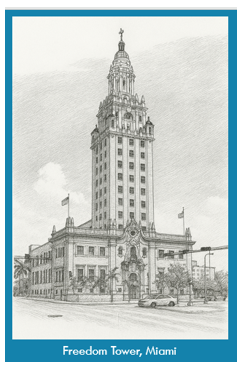- Home
- Florida History
- Florida Regional History
- Northwest Florida History
NORTHWEST FLORIDA
HERITAGE AND HISTORY
By Mike Miller Updated August 18, 2024
Northwest Florida heritage and history are all around you as you travel through miles of mainly rural country, pine woods, and some of the most beautiful sand beaches in the world.
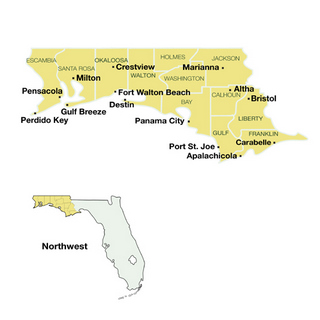
This region includes 12 counties. Culturally, it is more like Alabama than it is like the rest of Florida.
Northwest Florida heritage and history is evident in the many small towns that played a key part in early Florida history.
You will see many monuments and memorials to the Old South in the form of Confederate soldier statues in town squares and in front of courthouses.
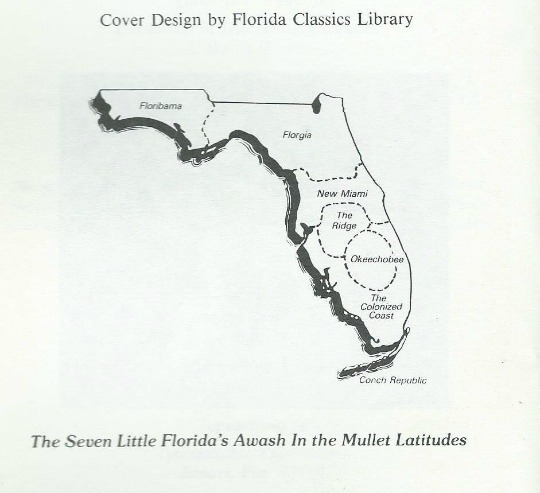
"Becalmed In The Mullet Latitudes" is a wonderful book by the late Al Burt published in 1983.
Al was a long time Miami Herald columnist who had a deep love for Florida and a melancholy for the "old Florida" that was disappearing.
He celebrated the Northwest Florida heritage and history along with other parts of rural Florida.
He identified and chronicled the disappearing old places that he
called the Mullet Latitudes. His name for Northwest Florida and the Panhandle was "Florabama".
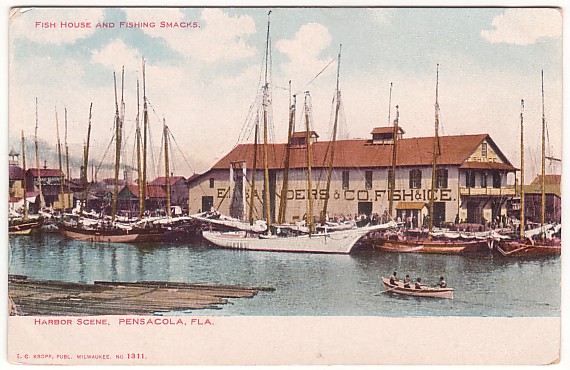
If Al were still alive, I think he'd stick with the name even though there has been a fair amount of Yankee migration into the area since he wrote his book.
Pensacola was settled by the Spanish in 1559. It was the first European settlement in the United States. It was a rival to St. Augustine on the Atlantic settled in 1565 on the other side of the state.
Pensacola was the first capital of Florida. When Florida became a U.S. territory in 1821, the capital was moved shortly after to Tallahassee because it was about halfway between Pensacola and St. Augustine.
After the Spanish left and Florida became a U.S. territory, settlers from Alabama and Georgia began homesteading small farms. In in the years before the Civil War, northern Florida was the most populated region of Florida.
These early settlers had a lot to do with establishing Northwest Florida heritage as part of the Old South.
This part of Florida remained largely rural and remote until after World War Two. Many houses and farms did not have electricity until after the war.
The communities survived on farming and fishing. Turpentine, naval stores and other timber based chemicals were important businesses in the years immediately before and after World War Two. The pine woods also attracted lumber and paper mills.
CONGRESSMAN BOB SIKES ERA BEGINS
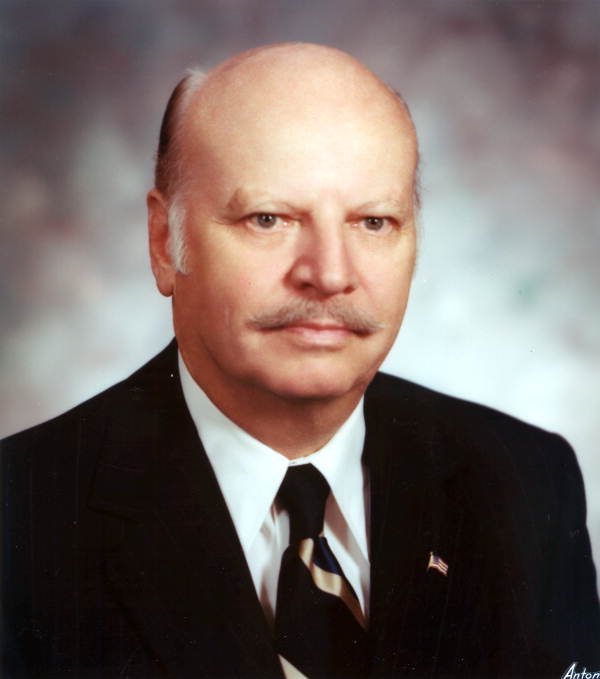
The Florida panhandle had a U.S. Congressman named Bob Sikes from Crestview. He was an expert at bringing home the bacon.
That's a good old American phrase that means he was good at getting Federal money for his Congressional District.
He had a lot to do with bringing many of the military installations to Florabama. He was in Congress from 1941 to 1979, with some time off during World War Two when he joined the military.
He helped preserve and continue the military elements of Northwest Florida heritage and history.
Eglin Air Force Base was built just before World War Two near Fort Walton Beach. It pulled the remote backwoods panhandle into the modern world.
Eglin is the largest military installation in the United States. The base sprawls across three counties, and is about the same size as Rhode Island.
I took my Navy pilot survival training course in the swamps and jungles of Eglin known as the boondocks.
The base is named for Fritz Eglin, an early Army aviator who died in a plane crash. I did not know until years later that my father is named Fritz in honor of the downed pilot.
Eglin was my grandfather's classmate at Wabash College in Indiana. Read more about Fritz Eglin here.
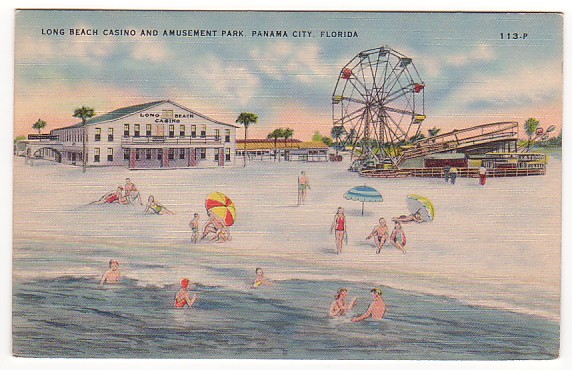
Panama City is the unofficial capital of Florabama, with Pensacola running a close second. The Florabama beaches are known by Floridians as the "redneck riviera". They have traditionally attracted Alabama and Georgia tourists.
Star high school football players in Florabama do not typically go to the University of Florida or Florida State University. They are more likely to sign up with the Alabama Crimson Tide or the Auburn Tigers.
The Florida panhandle has fewer "Go Gator" bumper stickers than anywhere else in the State.
A notable exception is Emmitt Smith, Hall of Fame running back for the NFL Dallas Cowboys. Mr. Smith graduated from Escambia High School in Pensacola and went on to gridiron glory at the University of Florida.
You non-football fans may remember him from "Dancing With The Stars".
NORTHWEST FLORIDA HERITAGE SITES
NORTHWEST FLORIDA HISTORIC SITES
Here are 104 Northwest Florida historic sites listed by county. County seats are also shown.

BAY: Panama City
- Junior Museum of Bay County
- Man in the Sea Museum
- Panama City Main Street
- SS Tarpon Underwater Archaeological Preserve
- St. Andrews State Park
CALHOUN: Blountstown
- Old Calhoun County Courthouse
- Panhandle Pioneer Settlement
ESCAMBIA: Pensacola
- Alger--Sullivan Lumber Company Residential Historic District
- Barkley House
- Barrancas National Cemetery
- Big Lagoon State Park
- British Fort of Pensacola
- Charles William Jones House
- Crystal Ice Co. Building
- Dorr House
- Escambia County Courthouse
- Fort Barrancas Historical District
- Fort George Site
- Fort McRee
- Fort Pickens
- Fort San Carlos de Barrancas
- Greater Mount Lily Baptist Church
- Gulf Islands National Seashore
- Historic Pensacola Village
- Julee Cottage Museum
- L & N Marine Terminal Building
- L & N Passenger Terminal
- Lavalle House
- National Museum of Naval Aviation
- North Hill Preservation District
- Old Christ Church
- Pensacola Historic District
- Pensacola Historical Museum
- Pensacola Hospital
- Pensacola Lighthouse and Keepers Quarters
- Pensacola Naval Air Station Historic District
- Pensacola Resource Learning Center and Library
- Pensacola Scenic Bluffs Highway
- Perdido Key Historic District
- Perdido Key State Park
- Plaza Ferdinand VII
- Saenger Theatre
- St. Joseph's Church Buildings
- St. Michael's Creole Benevolent Association Meeting Hall
- The Empire Building
- Thiesen Building
- USS Massachusetts Shipwreck
FRANKLIN: Apalachicola
- Apalachicola Historic District
- Bald Point State Park
- Cape St. George Lighthouse
- Crooked River Lighthouse
- Fort Gadsden Historic Memorial
- John Gorrie Museum State Park
- Ormon House
- Raney House Museum
- St. George Island State Park
- Trinity Episcopal Church
GULF: Port St. Joe
- Civic Center
- Constitution Convention Museum
- Port St. Joe Garden Club
- St. Joseph Peninsula State Park
HOLMES: Bonifay
JACKSON: Marianna
- Florida Caverns State Park
- Marianna Historic District
- Marianna Main Street
- Pender's Store
- Three Rivers State Park
LIBERTY: Bristol
OKALOOSA: Crestview
- Air Force Armament Museum
- Blackwater Heritage Trail State Park
- Blackwater River State Park
- Camp Walton Schoolhouse Museum
- Carver Hill Museum
- Destin HIstory & Fishing Museum
- Fred Gannon Rocky Bayou State Park
- Ft. Walton Beach Main Street
- Garnier Post Office Museum
- Gulfview Hotel Historic District
- Henderson Beach State Park
- Heritage Museum of Northwest Florida
- Indian Temple Mound Museum
- Mainstreet Crestview Association
SANTA ROSA: Milton
- Bagdad Village Historic District
- First American Road in Florida
- Florida State Road No. 1
- Main Street Milton
- Milton Historic District
- Mt. Pilgrim African Baptist Church
- Naval Live Oaks Reservation
- Navarre Beach State Park
- St. Marys Episcopal Church and Rectory
- West Florida Railroad Museum
WALTON: DeFuniak Springs
- Camp Helen State Park
- Chautauqua Hall of Brotherhood
- Deer Lake State Park
- DeFuniak Springs Historic District
- Eden Gardens State Park
- Governor Stone-Eden State Park
- Grayton Beach State Park
- Topsail Hill Preserve State Park
WASHINGTON: Chipley
- Falling Waters State Park
- Moss Hill Church
- South Third St. Historic District
- Woman's Club of Chipley
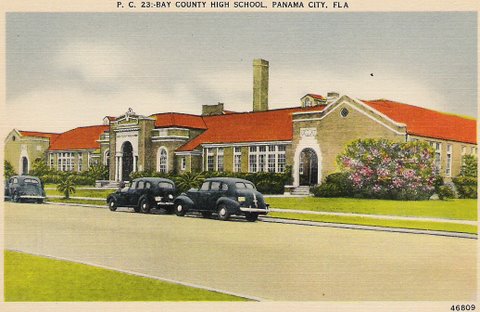 Panama City Bay High School Postcard
Panama City Bay High School PostcardNORTHWEST FLORIDA HERITAGE AND HISTORY
INCLUDES THESE COUNTIES
The Northwest Florida counties are Bay, Calhoun, Escambia, Franklin, Gulf, Holmes, Jackson, Liberty, Okaloosa, Santa Rosa, Walton, and Washington.
NORTHWEST FLORIDA TOWNS AND CITIES
Learn about 20 of the towns in these counties.
Also read about some short scenic drives in Northwest Florida and learn about some good Northwest Florida restaurants.

Florida is the fastest-growing state in the United States and also the fastest-changing. If you see anything in this article that has changed or is in error, please let me know.
Thousands of Florida fans subscribe to our free daily Ezine, Florida Heritage Travel and we have 130,000 followers on Facebook.
By Mike Miller, Copyright 2009-2025
Florida-Back-Roads-Travel.com
Florida Back Roads Travel is not affiliated with or endorsed by Backroads, a California-based tour operator which arranges and conducts travel programs throughout the world.
